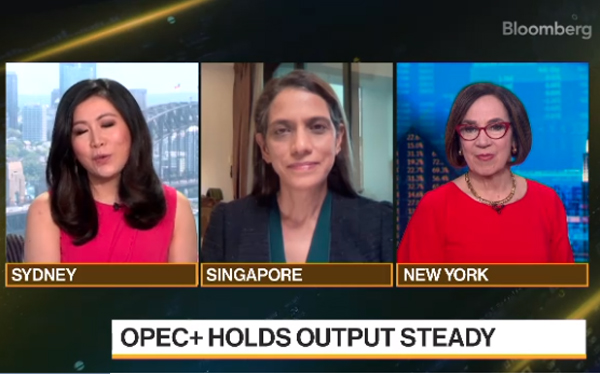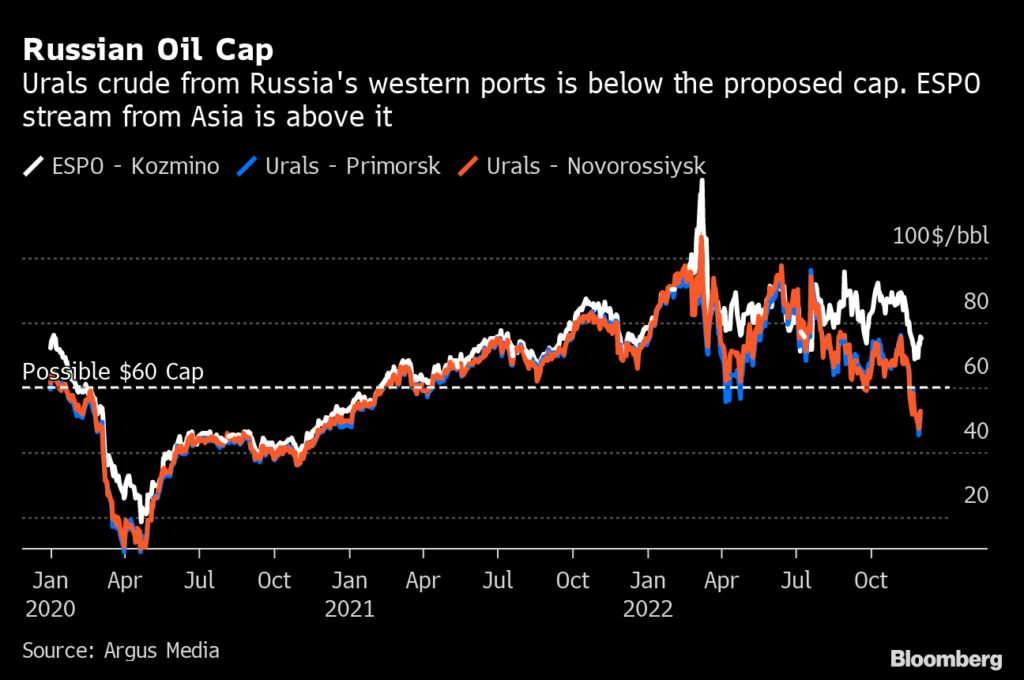
Salma El Wardany, Grant Smith and Ben Bartenstein, Bloomberg News
LONDON/WASHINGTON
EnergiesNet.com 12 05 2022
OPEC+ responded to surging volatility and growing market uncertainty by keeping oil production unchanged.
The outcome of the brief online meeting on Sunday reflects the unpredictability of supply and demand in the coming months, and the wild price gyrations in the past week.
The oil producers’ group has only just implemented the hefty 2 million barrel-a-day reduction agreed at its last gathering. Meanwhile, European Union sanctions on crude exports from Russia come into effect on Monday, and China is tentatively easing the Covid measures that have eroded its fuel consumption.
“With massive and offsetting fundamental and geopolitical risks bearing down on the oil market, ministers understandably opted to hold steady and hunker down,” said Bob McNally, president of Rapidan Energy Advisers LLC.
Brent crude rose 0.6% to $86.05 a barrel by 1:55 p.m. in Singapore on Monday. Chinese stocks and the yuan also rallied.
The oil benchmark’s up 11% this year, but has fallen from more than $120 a barrel in June amid increasing concern among traders about a global economic slowdown.
The decision by the Organization of Petroleum Exporting Countries and its allies should hold for at least a few months. The group’s Joint Ministerial Monitoring Committee, led by Saudi Arabia and Russia, will meet again in February. The outlook could be clearer by then, and the panel has the power to call extraordinary meetings if it thinks output policy may need to change.
The next full ministerial meeting is scheduled for June 4.
The oil market could look quite different by early 2023, with several potentially historic shifts in supply and demand unfolding in the coming days and weeks.
As OPEC+ ministers convened their roughly 20-minute video conference, officials in Shanghai had just eased some Covid restrictions, joining other Chinese cities as authorities accelerate a shift toward reopening the economy after thousands of demonstrators took to the streets.
Top government officials over the past week have signaled a transition away from the harshest containment measures, which have weighed on the economy in the world’s largest oil importer.
On Monday, the EU will ban most seaborne imports of Russian crude and block anyone else from using the region’s shipping or insurance services for purchases of Russian oil, unless it’s done so below a $60-a-barrel price cap.
It’s unclear to what extent those measures will curtail Russian exports. The price cap is comfortably above the $50 that the country’s flagship Urals grade of crude currently trades at, according to data from Argus Media. Yet Moscow has said it would rather cut production than sell oil to anyone that adopts the price cap.

With these powerful forces poised to push oil markets in unpredictable directions, OPEC watchers said the group’s decision was understandable.
“OPEC+ rolled over the existing quotas as expected amid uncertainty around Russian flows following the price cap, and a weaker China,” said Amrita Sen, chief oil analyst and co-founder at consultant Energy Aspects Ltd. “The group will continue to monitor markets and should fundamentals deteriorate they will meet prior to June.”
Sunday’s meeting was a calmer affair than the last one in early October, which created a diplomatic spat. President Joe Biden slammed OPEC+ for the supply reduction, accusing Riyadh of aiding Russia’s war in Ukraine by bolstering prices. Since then, the market’s fluctuations have given the group a sense of vindication.
The cut “was purely driven by market considerations, and recognized in retrospect by the market participants to have been the necessary and the right course of action towards stabilizing global oil markets,” OPEC said in a statement.
–With assistance from Julian Lee.
bloomberg.com 12 04 2022











